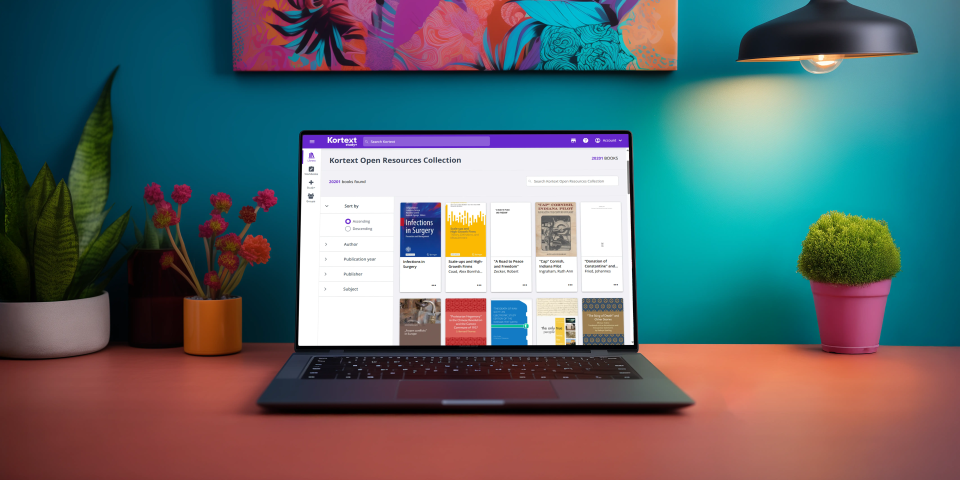Textbooks are changing and the way we buy them needs to change
For Kortext’s James Gray and Tim O’Shea, changes to the way we use textbooks mean we need to think more about the way we buy them.
The higher education sector stands at a point of inflexion.
A full on-campus experience is currently not possible, and fully online models cater for certain niches well but have not yet become popular with mainstream undergraduates. Blended learning, done well offers the best of both. Many universities are re-engineering their approaches for a blended future – the experiences the sector has faced during the pandemic have accelerated this existing trend.
It now seems clear that, whatever the aftermath of the pandemic brings, the convenience and quality of digital textbooks will play a part in the future of learning and teaching. More students experienced this kind of resource in 2020 and 2021 – everything we’ve seen suggests that they liked what they saw.
The new breed of textbooks is dynamic, and interactive, and are able to respond to the needs of different learners and situations. They can also feedback detailed usage data to academics and librarians – so we know when individual students are struggling or when a particular part of the resource isn’t working in a given context.
Making it happen
If you’re coming at this problem cold you might think that e-textbooks should be cheaper than their printed counterparts. After all, there are huge savings in printing, inventory, and logistics costs, and the cost of producing an additional copy is almost zero. This has not been the case. Partially this can be explained by the development costs of multimedia and interactive features – but it does still come as a surprise to many.
The trouble is – some of these books and resources become very expensive when every student needs their own copy. Historically, academic course leadership teams have not needed to give the cost of resources too much consideration. What they need is generally what they get, with libraries and student budgets adapting to compensate for this. When this approach applies to a resource that requires a copy for every registered student, we have a problem.
Of course, we do offer free, open, textbooks on Kortext. These don’t have all the bells and whistles of other offerings, and neither do they cover all subject areas, but they are a great product and are used effectively by many providers. In the US and Canada, open textbooks are a huge deal, and it surprises us that the UK hasn’t been as quick to adopt these.
The best book for the situation
We’re involved with Kortext because we think textbooks are a great way to support learning. We think they should be easy and consistent for students to access, and easy for academics to link to from course pages on VLEs. And we think that it should be easy to understand how materials are being used by students – to inform library purchasing decisions and course design. And we think that rather than having to make sense of many differing publisher platforms, a full range should be available in a simple and easy-to-use collection.
Sometimes, a course or a module might choose an expensive book as the best option for their students – which leaves libraries with a problem. Covering the costs if this pattern is repeated puts a lot of pressure on the library budget. And we think that this needs to change.
It is no longer enough to expect the library budget to cover the financial implications of these choices. Just as changes to scholarly publications have moved some spending from libraries (for ongoing journal subscriptions) to academic departments or research funders (for article processing charges) we think that the cost of these premium textbooks may end up coming from the budget of the originating departments or a central teaching and learning budget.
Neither can we continue to expect students to cover the costs. Students are already running up debt for tuition and accommodation, and have become savvier about what they should expect in return for this outlay. Increasingly, the materials needed to complete a course are expected as a part of the course – not at a further cost. Many providers already offer this, and we expect more will follow.
Paying for it
That’s not to take anything away from the library staff who work with course teams to select and recommend materials. The work they do is a hugely important part of how the sector delivers learning – as the experts in learning materials they should continue to play this essential role.
But textbooks are no longer just text and images. They are assessment tools, electronic teaching aids, multimedia, and simulations. Used well, they can hugely benefit student learning. For us, they can be seen as fundamental to the teaching of some courses and modules – perhaps it is time for other parts of the university to take a responsibility for these costs.
This article is published in association with WonkHE. Join us to debate the future of learning resources at a Wonkhe @ Home event on 28 April.






